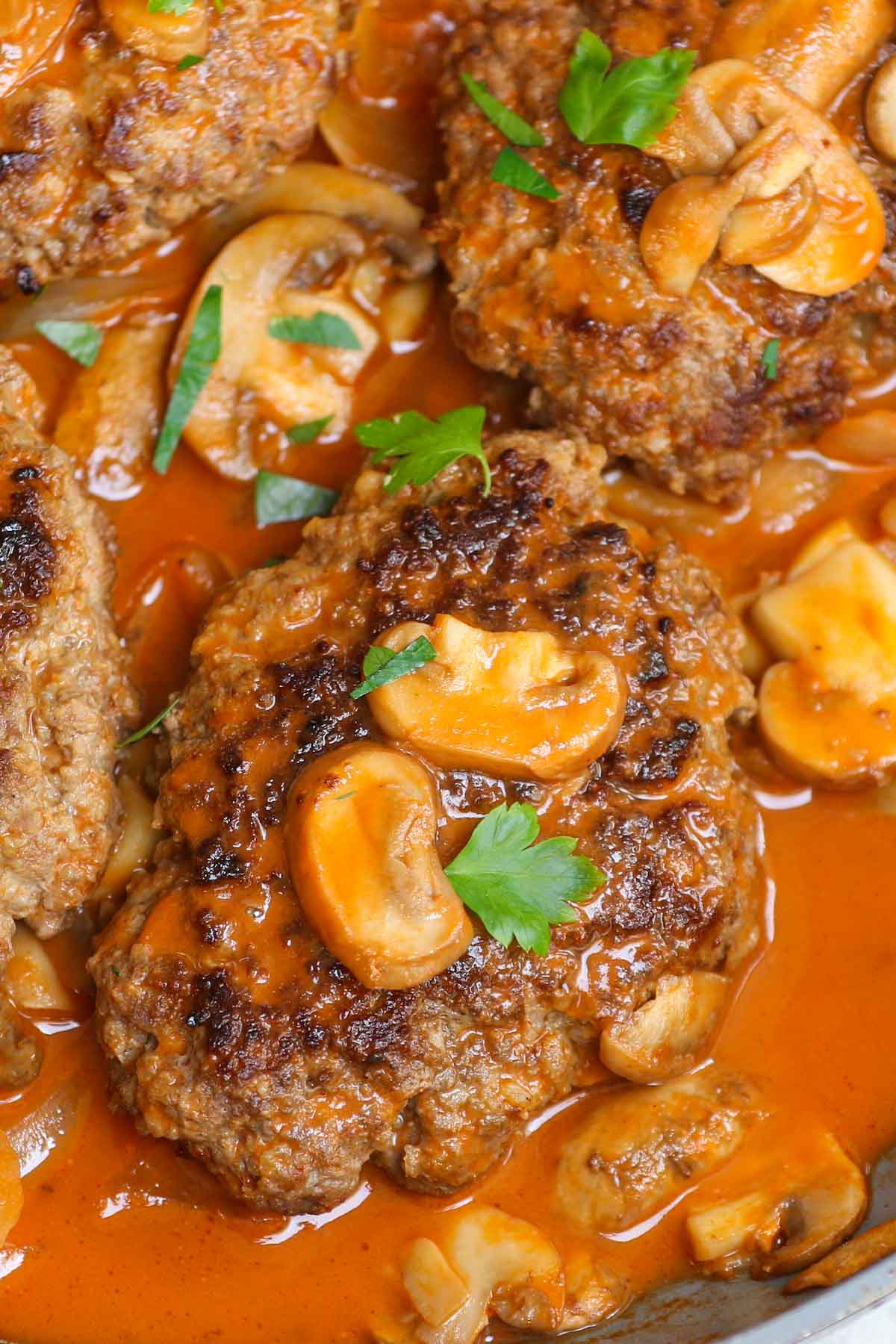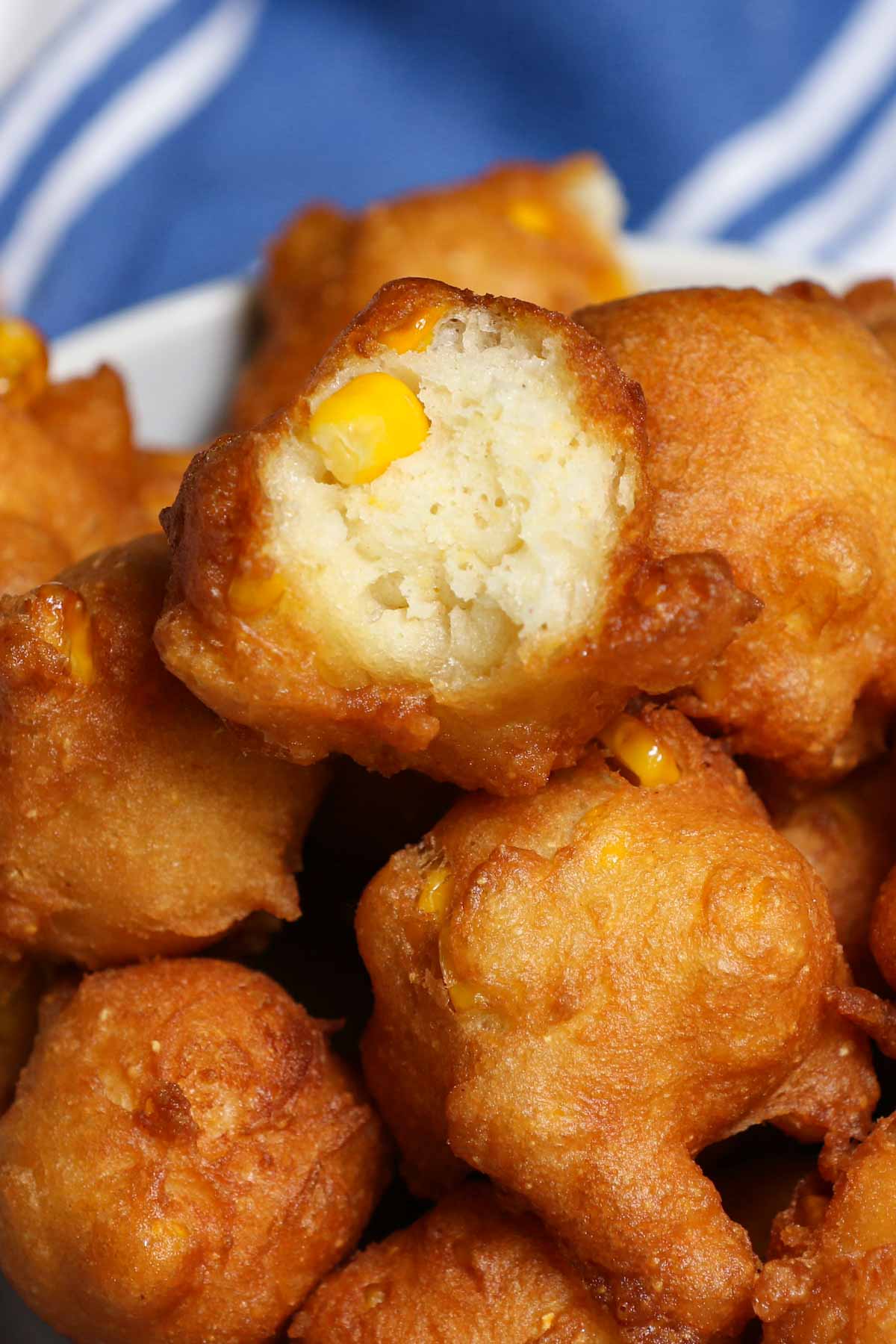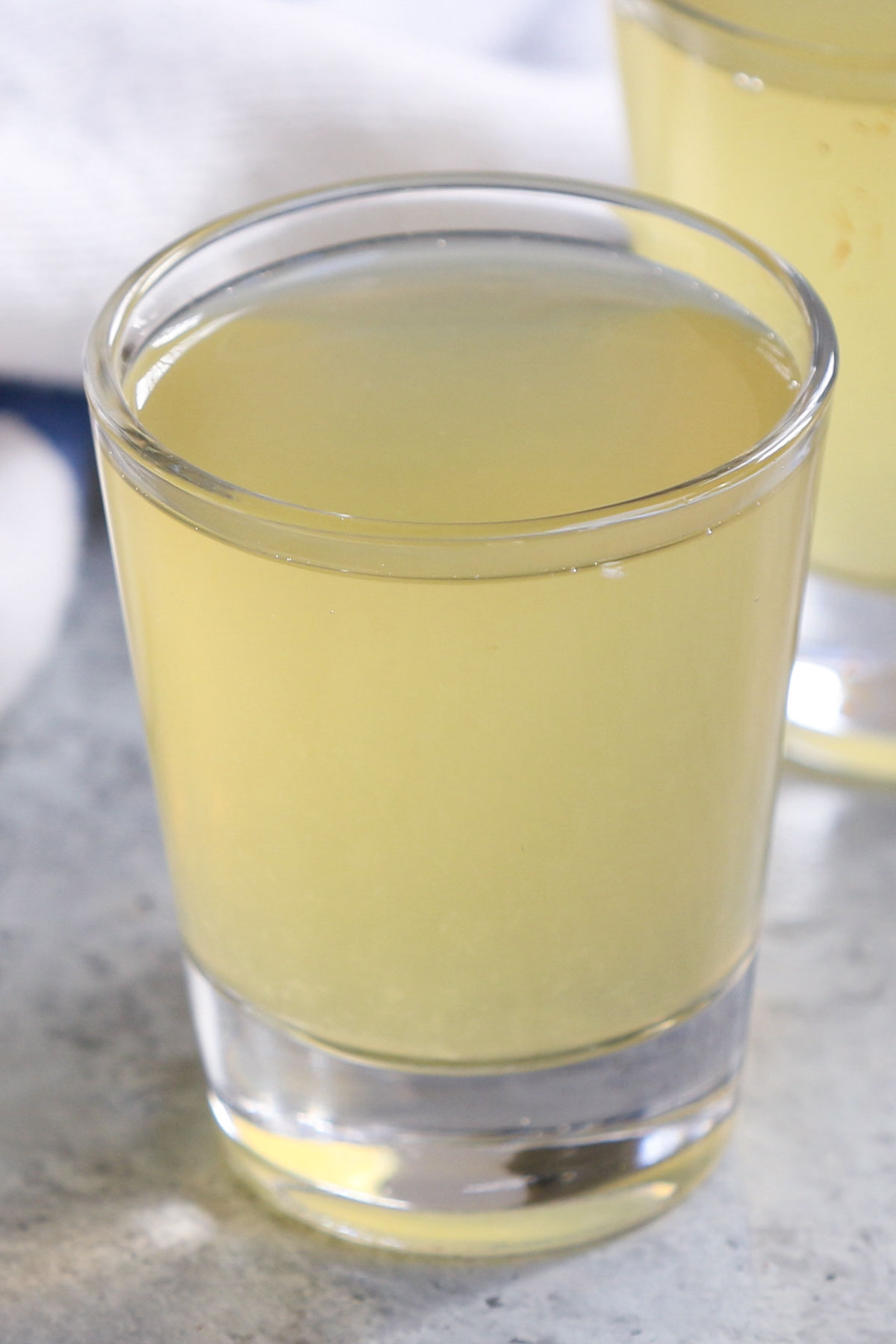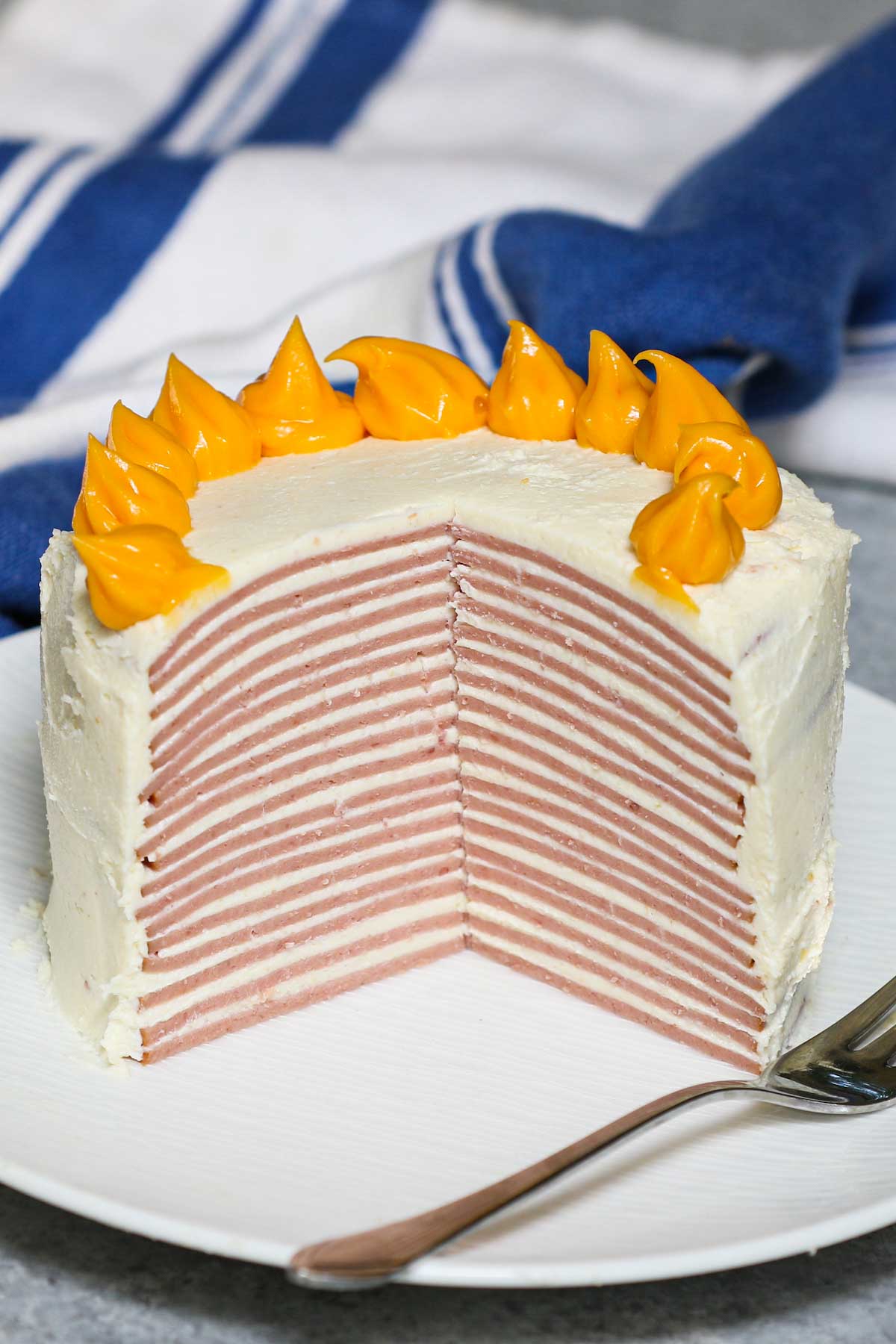Best Internal Temp of Cooked Chicken
on Mar 11, 2023
This post may contain affiliate links. Please read my disclosure policy.
You want your chicken to be tender and delicious but it also has to be cooked thoroughly. Not sure what the right internal temperature of cooked chicken should be? Read on to find out more about the safest temperature for various cuts of lean and tasty chicken meals.

Read on for all the tips and information you need to make your chicken dishes flawlessly.
What Temp is Chicken Cooked?
To ensure harmful bacteria like salmonella and E-coli are gone, the USDA recommends cooking chicken until it reaches an internal temperature of 165°F.
Of course, some cuts of chicken taste better when cooked to a higher internal temperature than 165°F. Here are some guidelines to keep in mind for different types of chicken:
- Chicken breasts: 165°F (meat will dry out beyond this temperature)
- Whole chicken: 165°F in the breast, 175°F-180°F in the thigh
- Chicken legs/drumsticks: 175°F
- Chicken thighs: 175°F (same as drumsticks)
- Chicken wings: 190°F (Collagen breaks down at higher temperatures so this will ensure a crispier exterior)
Basically, white meat is done at 165°F. It can dry out easily, so you don’t want to cook too far beyond this point. Dark meat is best between 175°F to 190°F, depending on your personal taste.
How to Measure the Internal Temperature of Chicken
An instant-read thermometer is the best and safest way to measure the internal temperature of chicken. Insert the probe into the thickest part of the meat while making sure not to touch the bone or a pocket of air or fat. This can cause inaccurate readings.
Here are some more details on how to measure different cuts of chicken:
- Chicken Breast: Insert the probe into the thickest part of the meat, being careful not to touch the bone. Push the probe in a little more than halfway through the meat. You can safely remove the chicken from the heat source at 160°F as it will continue to cook while resting.
- Chicken Thighs: Insert the probe into the thickest part of the thigh towards the center of the meat. When chicken thighs reach between 175°F and 190°F, they’re done.
- Chicken Legs or Drumsticks: Checking the internal temperature of legs or drumsticks is similar to checking the temperature of chicken thighs. Insert the probe into the thickest part of the meat, but be sure not to touch the bone. The meat is ready when it reaches between 175°F and 190°F.
- Chicken Wings: It can be a little tricky to check the temperature of chicken wings. Insert the probe into the middle of the drumette or wingette. The meat is ready between 180°F and 190°F.
- Whole Chicken (Unstuffed): To be safe, you’ll have to check the temperature of a whole stuffed chicken in two different areas. When the breast reaches 165°F and the thighs reach 180°F, the meat is ready. Whole chicken continues to cook while resting so you can safely remove it from the heat source at 5°F less than the recommended internal temperature.
- Whole Chicken (Stuffed): A stuffed whole chicken is safe to eat when it reaches an internal temperature of 165°F in the breast and 180°F in the thighs. Take a third of the measurement of the stuffing itself and ensure this is also a minimum of 165°F.
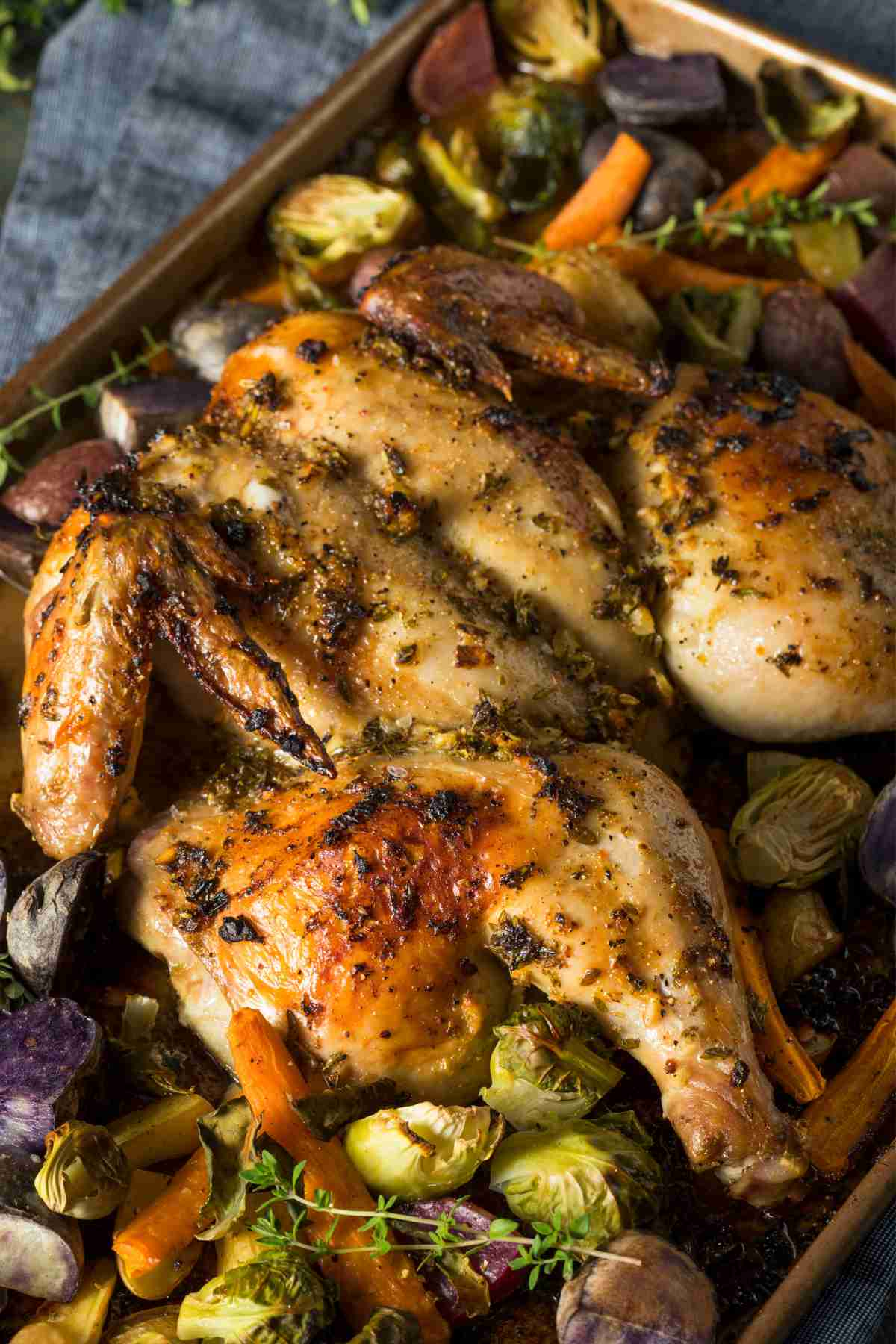
Cooked Chicken Temperature Tips
- Thaw frozen chicken completely. This will ensure your chicken cooks evenly, inside and out.
- Brine chicken overnight. For a more tender and flavorful result, you can soak the chicken in saltwater overnight.
- Use a thermometer to measure internal temperature. Avoid cutting into the meat to check for doneness because this will release the juices and make the meat dry out.
- Use a wireless dual-probe thermometer. For grilling and roasting, this thermometer comes in handy. It remains inserted in the meat throughout the cooking process. It can also be set to ring when the chicken reaches the safest internal temperature.
- Let chicken rest for 5 minutes. This helps raise the internal temperature while preserving the juices for a more tender and juicy dish.
FAQ
Is Chicken Done At 165°f Or 180°f?
Chicken is ready at either temperature. For safety, 165°F is the minimum. For white meat, this is sufficient. For drumsticks, thighs, legs, or wings, chicken is still tender and flavorful up to 180°F or 190°F.
Is Chicken Really Done At 165?
Yes, chicken is safe to eat at 165°F. Some parts may be tastier when cooked beyond that point but this is a personal preference.
Is 145°F Safe For Chicken?
No. Chicken cooked below 165°F is absolutely not safe to consume. There is a risk of foodborne illness if the chicken is consumed at a lower internal temperature. For safety, always ensure your chicken is at least 165°F.
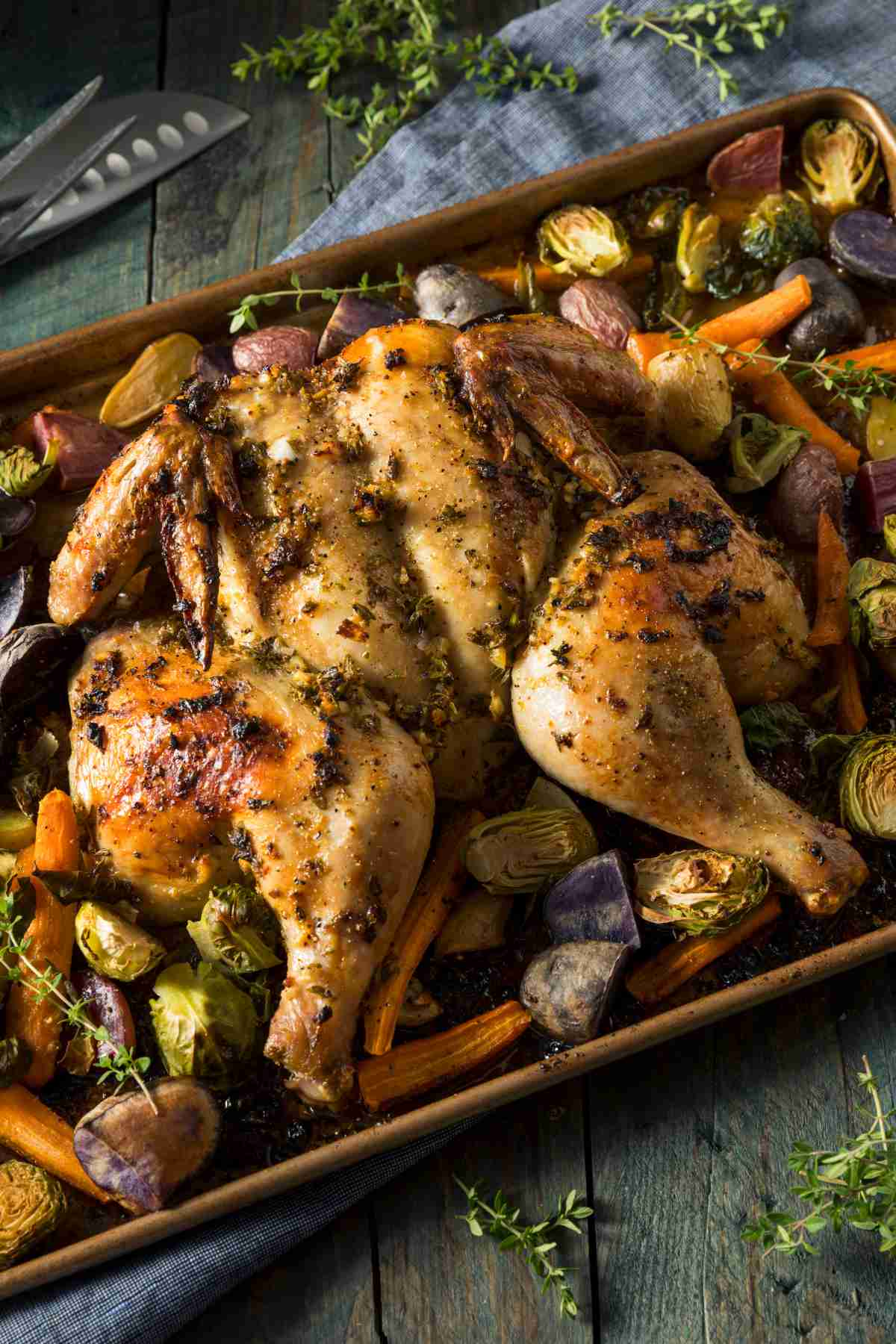
Is Chicken Cooked At 70°c?
Chicken is not exactly ready at 70°C. The USDA advises consuming chicken only at 165°F, which is 74°C.
Where Do You Stick A Thermometer In Chicken?
When roasting a whole chicken, insert the probe into the inner thigh near the breast without touching the one for the most accurate reading.
Is It Ok To Eat Chicken That Is A Little Pink?
According to the USDA, if the internal temperature is 165°F, it is safe to consume even if there is some pink coloring. This is not always an indicator of whether or not the meat is done. Poultry can often have a hint of pink due to the juices and not the level of doneness.
Does Chicken Continue To Cook While Resting?
The internal temperature of chicken will rise about 5°F while resting. When roasting, grilling, or pan-frying, it may rise as much as 10°F. Always check the temperature right before serving.
How To Tell If Chicken Is Cooked Without A Thermometer
The safest way to ensure your chicken is safe to eat is to check with an instant-read or a dual-probe thermometer. Relying on how it looks alone is not always accurate. The juices should also run clear when the chicken is done.
You May Also Like
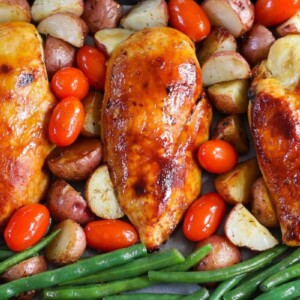
How to Bake Chicken in the Oven (With the Right Internal Temp)
Ingredients
- 3-4 chicken breasts, boneless, skinless
- 1 pound baby red potatoes, halved
- 12 cherry tomatoes, or grape tomatoes
- 1 lemon, sliced into rings
- 4 teaspoons garlic, minced
- 1 teaspoon oregano
- 1 teaspoon thyme
- 4 tablespoons olive oil
- salt and pepper, to taste
- 1 tablespoon butter
- 3 sprigs fresh rosemary, optional
- 3/4 pound green beans, trimmed
- fresh parsley, for serving
Instructions
- Preheat oven to 400°F and set your oven rack to the top half. Set aside a large baking sheet.
- Scatter potatoes and tomatoes across the baking sheet. Add chicken breasts in the middle a few inches apart. Rub chicken breasts with 1 tablespoon oil.
- Sprinkle minced garlic, oregano and thyme across pan. Add salt and pepper to taste.
- Drizzle the rest of olive oil evenly across. Toss to mix well. Place several lemon slices on top of chicken.
- Butter a piece of parchment paper, and cover the chicken and vegetables with buttered parchment paper (butter side facing down)
- Bake for 22 to 25 minutes, adding green beans for the final 10 minutes. If the chicken looks pale, you can always put it under the broiler for the final 3 minutes.
- Check doneness by inserting an instant-read thermometer into the middle of the chicken breast. Remove from the oven as soon as it reaches 160°F (71°C). Alternatively, as soon as clear juice starts to seep out of your chicken breasts, it means that they are cooked through.
- Remove the chicken to a serving plate or carving board. Cover with foil and let it rest for 5-10 minutes to let the juices redistribute through the meat before serving.
Notes
- Smaller chicken breasts (4 oz) need to be baked for 18-20 minutes, while larger chicken breasts (8-10 oz) will take 25-30 minutes to bake.
- Add 8-10 minutes of additional baking time if you use bone-in chicken breasts.
- Remove chicken from the oven when the internal temperature reaches 160°F, as the temperature will rise a few degrees during resting.
- Use leftover baked chicken to make Chicken Avocado Rollups, Chicken Noodle Soup and Chicken Fried Rice. Cooked chicken lasts 3-4 days in the fridge.
Nutrition information provided is an estimate only and will vary based on ingredient brands and cooking methods used.
